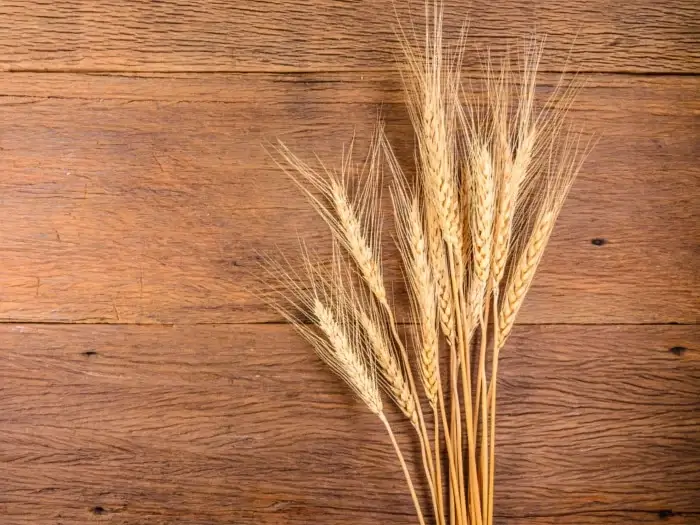Suppose you suffer from high blood pressure, arthritis, asthma, impotence, skin problems, anemia, obesity, constipation, diabetes, kidney problems, or heart disease. In that case, it may be time to learn about the health benefits of barley. Its benefits are mainly due to the eight essential amino acids it contains, meaning it is a complete protein in our diet. Recent studies have shown that consuming whole-grain barley is better for blood sugar management due to its low glycemic index.
A lot of research that has happened in recent years has shown that even our regular diets are deficient in important nutrients. Fiber is one of the most important nutrients we often overlook. Barley is an excellent source of both soluble and insoluble fiber, which can support your overall health in the long run.
Before we move on to its health benefits, you’ll be happy to know that you can make it into various foods, such as salads, soups, and stews. Therefore, it is not only good for your health but also good for your palate.

Health Benefits of Barley
Barley is used for skin care, boosts immunity, and prevents conditions like osteoporosis, gallstones, and diabetes. Let’s look at these common benefits in detail:
Maintain a healthy gastrointestinal tract
Barley is an excellent source of fiber, which can help remove toxins from the body. Its grass is rich in dietary fiber and is a fuel for the good bacteria in our large intestines. These bacteria help ferment the fiber content in the barley to form butyrate, the main fuel for the cells in the gut. It is very effective in maintaining colon health. Keeping your gut healthy helps increase the movement time of your stool and keeps your stomach clean.
Prevent gallstones
Barley can effectively help women avoid gallstones. Because it’s high in insoluble fiber, it can help you reduce bile acid production, which increases insulin sensitivity and lowers triglyceride levels. An article in the American Journal of Gastroenterology said that women who ate a fiber diet had a 17 percent lower risk of developing gallstones than other women.
Prevent osteoporosis
The phosphorus and copper content in barley grass ensures the overall health of bones. If you have osteoporosis, it can help with more natural remedies. Its juice has 11 times the calcium content of milk. Calcium, as we know, is one of the key ingredients in maintaining healthy bones. We need manganese for normal bone formation and iron deficiency anemia. The manganese content in barley is associated with B-complex vitamins.
It helps prevent iron deficiency anemia (IDA)
High in nutrients, barley is especially useful because it boosts your immune system and reduces your chances of catching colds and flu. Iron improves blood volume and prevents anemia and fatigue. It contributes to the normal function of the kidneys and the development of red blood cells. In addition, it contains copper, which forms hemoglobin and red blood cells.
Skincare
Barley is a good source of selenium, which helps maintain skin elasticity, thereby protecting the skin from free radical damage. In addition, it improves the function of our heart, pancreas, and immune system.
Control cholesterol levels
The European Journal of Clinical Nutrition published a study showing that barley and all its products help lower LDL cholesterol levels. That is mainly due to the presence of beta-glucan.
Its insoluble fiber produces propionic acid, which helps keep blood cholesterol levels low. An excellent source of soluble and insoluble fiber, it’s also recommended by doctors for its naturally low-fat content and lowest cholesterol content.
Manage diabetes
A 2014 study published in Research in Pharmaceutical Sciences showed that high-fiber barley could effectively help manage type 2 diabetes. Its grains contain all the essential vitamins and minerals, especially beta-glucan soluble fiber.
The December 2006 edition of Nutrition Research demonstrated that insulin-resistant individuals who consumed barley-glucan soluble fiber had significantly lower glucose and insulin levels than other test subjects.
Anti-cancer properties
Based on phytochemicals such as folic acid, flavonoids, and lignans.
Furthermore, the Finnish Institute of Preventive Medicine, Nutrition, and Cancer (Folkhälsan Research Center) has demonstrated that lignans have anti-cancer properties that help treat many types of cancer. Barley contains certain phytonutrients called phytolignans, which are converted into mammalian lignans by friendly plants in our gut. One of the new lignans is called enterolactone, which helps protect against breast and other hormonal cancers and coronary heart disease.
Protect heart health
Atherosclerosis is a condition where walls of arteries thicken due to the coagulation or deposition of fatty substances such as cholesterol. Barley contains niacin (a B vitamin) that can help lower overall cholesterol and lipoprotein levels and reduce cardiovascular risk factors.
A study in the Journal of the American Dietetic Association shows that a diet of whole grains is essential for people with high blood pressure. Barley is rich in fiber, which can lower blood pressure and help maintain optimal body weight.
Prevent Asthma
14.5 kDa is a barley endosperm protein that is a major allergen in bakers’ asthma, according to a study published in the journal Plant Molecular Biology. It is an airborne occupational disease mainly found in confectionery and bakeries. It is a very effective preventive measure against this major flour allergen.
Nutritional Forms of Barley
Wheatgrass is the seedling of its plant. This grass usually harvests around 200 days after germination, and the buds aren’t even a foot tall. People eat it in this form because the young leaves are rich in minerals, vitamins, antioxidants, and amino acids. Although its grains contain more dietary fiber in comparison, it contains high levels of chlorophyll, which helps flush out harmful toxins from the body.
Husk barley, also known as husk barley, is usually eaten with the inedible fibrous husk removed. It is a great source of healthy nutrition. In normal cooking, it takes a long time to soak. However, considering the utility after peeling, the time is worth it. Once hulled, it is known as hulled, pot, or Scotch barley, which is very popular commercially and is a very popular product. The process of removing the bran and polishing is called “pearling.”
Pearl barley is readily available in grocery stores and is one of the world’s most common breakfast and snack recipes. It is hulled barley that has processes to remove the bran. It processes into many products, such as flour and flakes, similar to oats or grits.
Barley green powder is known for its medicinal properties. These herbs come in a variety of flavors and have superior solubility. Therefore, you can also consume them in the form of juice.
Barley flour is often used as wheat flour or as a low-gluten flour. Whole barley flour is more nutritious than tapioca because the bran is left intact. It contains some gluten and is popular with confectioners who try different kinds of flour. It has a mild, nutty flavor and is relatively low in calories and high in fiber.
Barley water is effective when your kidneys need a break from excess stress. People with kidney and bladder problems can drink barley water for treatment.
How to choose barley?
When you want to buy it, you must first decide what form you should buy. Barley comes in many forms, each with different nutritional benefits. Whole grain barley has the highest nutritional value in its grain, leaves, and even grass extracts.
Barley is widely available as a commercial product in different forms around the world. You need to know the exact format that best meets your needs. Pearl, flake and shell forms serve different purposes, so decide what you want to do before buying. It is in bulk containers and packaged form; make sure it’s fresh before taking it home. If you bought it in a container, check the expiration date and make sure it’s sealed properly. Even small amounts of moisture in packaged barley can spoil the grain, so be careful—store in a clean glass, airtight container in a cool, dry place. In summer, its recommends to store it in the refrigerator.


